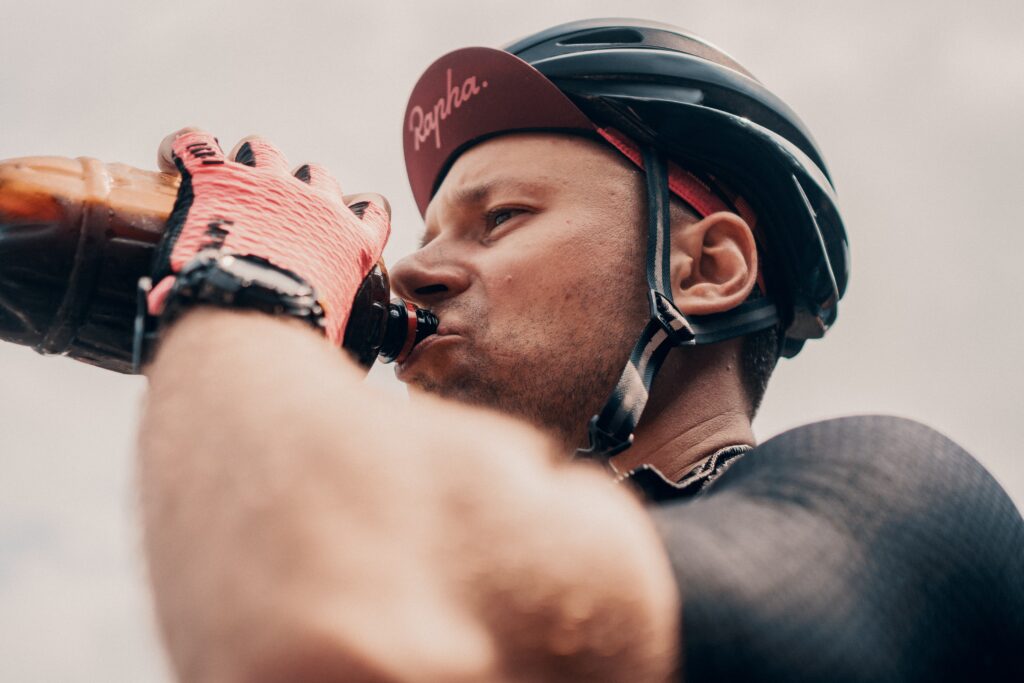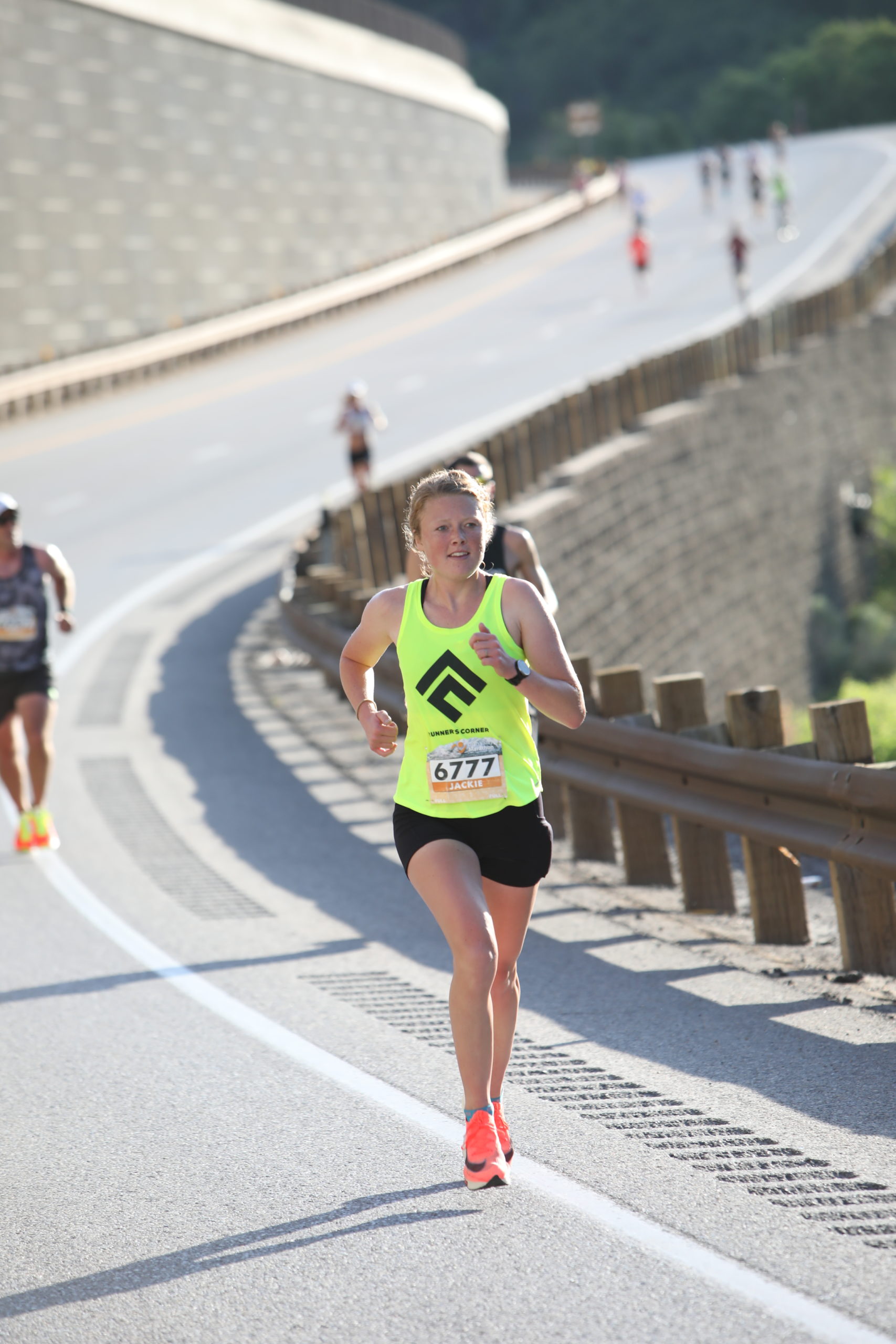Hyponatremia Causes and Treatment in Athletes

“Drink more water!” is a common piece of advice given to athletes. Is there such a thing as too much water? In this article, we discuss hyponatremia causes and treatment in athletes. This is a relatively rare condition that endurance athletes may experience but need to take precautions to avoid.
What Is Hyponatremia?
Hyponatremia occurs when an athlete’s sodium levels drop below optimal levels (<130 mmol/L). The most typical cause of this condition is fluid overload. This happens when the volume of water in the body is so high that the amount of sodium is dangerously diluted in the bloodstream. This can happen for an athlete who only hydrates with plain water. It can also happen when they drink more than what their body needs during exercise.
Long-distance swimmers and marathon runners have the highest rates of hyponatremia. Cyclists, ultra-runners and Ironman triathletes tend to have lower rates of hyponatremia.
Athletes who experience hyponatremia may feel dizzy, disoriented, fatigued, have a headache, or have muscle cramps. It’s also common for swelling to occur and/or to experience an overall weight gain from excess fluid consumption.
It becomes more common for athletes to deal with this condition in warmer climates. Events that are extremely long in duration (8+ hours) can also be a trigger. Females are more likely to experience hyponatremia than males. Taking NSAIDS before the race (such as ibuprofen or aspirin) can encourage the body to hold onto water. This can increase an athlete’s overall risk of hyponatremia.
Bottom line: your body needs optimal sodium levels in order to function properly. When those levels drop too low, you’re going to feel it!
How Do I Avoid It?
Preventing hyponatremia is a balancing act. The goal is to maintain optimal levels of both fluid and sodium in the body throughout the duration of exercise. Losing too much fluid & sodium will result in dehydration, and over-compensating for those losses may result in hyponatremia.
Every athlete has different sweat rates. You may have noticed this when comparing sweat stains with training partners. You may have large wet rings lined with white salty residue while your partner may look nearly dry. Figuring out your own formula for optimal sodium & fluid intake is highly individualized. However, using general recommendations for sodium & fluid intake is a great place to start.
General Recommendations
Most athletes maintain adequate hydration & sodium levels by following these guidelines per hour of activity:
Sodium intake: 300-600 mg sodium per hour
Fluid intake: 12-24 oz per hour
In order to see how you are doing in this regard, check your gels, drinks, and any other products (for example salt tabs or capsules) to add up how much sodium you are typically consuming over the course of your endurance activity. Divide that number by the amount of hours you spent working out, and you will be able to see how your typical intake compares to the general recommendations. Repeat with your fluid intake.
My Experience With Athletes
In my experience with athletes, 300 mg sodium per hour seems to fit many athlete’s needs while exercising in moderate temperatures without humidity. Higher needs (closer to 600 mg sodium per hour) are more likely to be needed for those who are heavy sweaters in any temperature, particularly if they are also salty sweaters; as well as athletes exercising in hot and/or humid climates. It is not unheard of for athletes to be outside of this general range either, but will take some trial and error to figure out what works best for you personally. An athlete may find it helpful to weigh themselves before and after a long effort. Losing less than 2% of the starting body weight, and not gaining weight from excess fluid consumption, is a good sign that you as an athlete are hydrating properly.
(As a side note, athletes can also invest in various sweat tests commercially available that will give a personalized reading of your own fluid & electrolyte losses. Taking one of these tests at various times of the year will help an athlete determine their varying needs with differing temperatures.)
Options For Getting Sodium Into Your Body
From the research available, drinking a beverage that contains electrolytes is one of the most effective ways to prevent fluid overload, even more so than balancing electrolyte and fluid intake using gels/tabs/capsules/etc. This is likely explained by the fact that an athlete who balances sodium and fluid intake using various products is more at risk for forgetting one or more aspects of their fueling strategy versus the athlete that only has to focus on getting enough of one product that includes both adequate sodium & fluid to maintain optimal balance.
Eating enough sodium on a general, daily basis is also something that endurance athletes should be aware of. Essentially, endurance athletes do not need to be concerned about their overall sodium intake and should avoid purchasing “low-sodium” options at the grocery store & be liberal with the salt shaker during hard training periods (particularly if these training periods take place in warmer climates). Assuring adequate plasma sodium levels before exercise reduces the risk of hyponatremia during or after exercise.
Athletes should also take measures to acclimate themselves to the temperature and humidity at which they will be racing in. Positive physiological changes happen to an athlete who effectively heat trains prior to competition. This will allow an athlete to compete without worry. They can also be better able to stick to their traditional fueling and hydration strategies without surprises.
Bottom line: assuring the right ratio of sodium and fluid in the body during exercise is the number one thing an athlete can do to prevent hyponatremia. Athletes should start with meeting their needs via general recommendations. From there they can further personalize those recommendations as they experiment with different products and climates. They may also notice how efforts throughout their training affect them. Drinking beyond thirst/what your body needs will be more harmful than beneficial.
What Do I Do If It Happens?
As an athlete, if you start to notice any signs of hyponatremia the safest thing to do is to seek medical attention. Depending on how severely your sodium levels have been depleted will determine the next course of action. Medical professionals may provide you with an immediate saline solution to boost sodium levels. They also may offerr a diuretic to reduce fluid volume in the body.
If you do not have medical professionals readily available, know that a self-diagnosis of hyponatremia is difficult to accurately provide. A blood marker of actual sodium levels, is important and seeking medical attention is your top priority. However, in the meantime, stop drinking fluids & give your body sodium via gels, food, or capsules as a starting point.
Hyponatremia Causes and Treatment in Athletes
Hyponatremia is a dangerous condition most commonly found in endurance athletes. This occurs when sodium levels are too low in the body. Endurance athletes can take a variety of precautions to prevent hyponatremia from happening. These include: maintaining an appropriate balance of fluid & sodium in the body. To do this they can use an electrolyte beverage instead of just plain water during activity. Another option is acclimating to the climate at which the competition will take place,. Lastly, eating adequate amounts of sodium on a daily basis can help. If an athlete does notice strong symptoms of hyponatremia, they should seek medical attention as soon as possible. This will help them to be accurately diagnosed & treated.
References
- Knechtle B, Chlíbková D, Papadopoulou S, Mantzorou M, Rosemann T, Nikolaidis PT. Exercise-Associated Hyponatremia in Endurance and Ultra-Endurance Performance-Aspects of Sex, Race Location, Ambient Temperature, Sports Discipline, and Length of Performance: A Narrative Review. Medicina (Kaunas). 2019 Aug 26;55(9):537. doi: 10.3390/medicina55090537. PMID: 31455034; PMCID: PMC6780610.
- Hew-Butler T, Loi V, Pani A, Rosner MH. Exercise-Associated Hyponatremia: 2017 Update. Front Med (Lausanne). 2017 Mar 3;4:21. doi: 10.3389/fmed.2017.00021. PMID: 28316971; PMCID: PMC5334560.
- Veniamakis E, Kaplanis G, Voulgaris P, Nikolaidis PT. Effects of Sodium Intake on Health and Performance in Endurance and Ultra-Endurance Sports. International Journal of Environmental Research and Public Health. 2022; 19(6):3651. https://doi.org/10.3390/ijerph19063651
- Lewis J. Hyponatremia. Merck Manual: Professional Version. https://www.merckmanuals.com/professional/endocrine-and-metabolic-disorders/electrolyte-disorders/hyponatremia#top. Last review September 2021. Last revision September 2022.
Advertisement

Jackie Hendrickson RD, MPH is a registered dietitian with a Masters Degree in public health nutrition from Utah State University. Jackie is the owner of Enduura Nutrition and loves coaching her athletes to their athletic potential through sustainable training & nutrition principles. She is an avid road & trail marathoner with a background in collegiate track, cross country, and competitive swimming. Jackie and her husband, Adam, were teammates in college and continue to pursue their running goals together. They live in beautiful Ogden, Utah with their 2 year old son, Lincoln.









